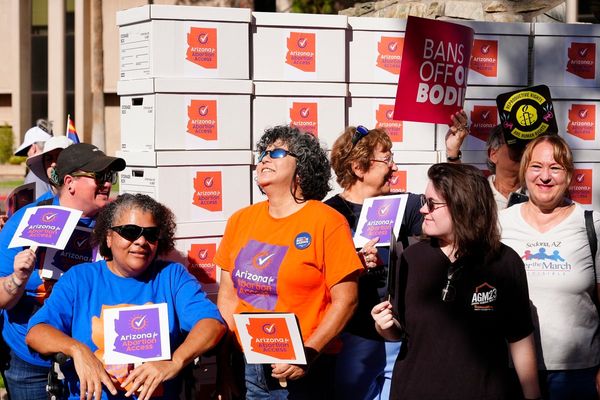
Eskyiu. Let it roll off your tongue and you’ll understand why architects Marisa Yiu Kar-San and Eric Schuldenfrei mashed up their names to come up with a memorable appellation for their Hong Kong-based design studio: its playful homonym, “askew”, characterises their off-kilter approach to design.
“We have both taught architecture … we’re obsessed with it, but we are not traditional architects,” Yiu says.
Less focused on home and office projects, Eskyiu is rooted in a desire to contribute to a “bigger picture”.
“Education and technology are a big part of our practice, and so is using architecture and different disciplines to inspire the public,” says Yiu, who is also co-founder and executive director of Design Trust, a charitable initiative that supports innovative design in Hong Kong.
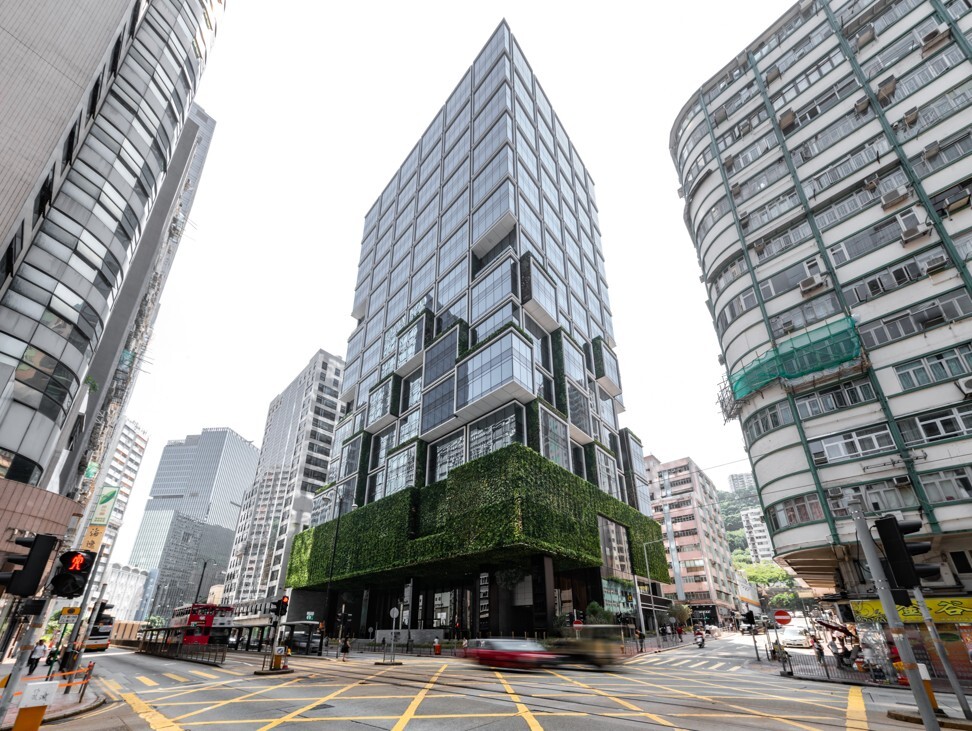
Strong proponents of civic engagement, Yiu and Schuldenfrei, who heads the architecture department at the University of Hong Kong, want to supercharge the city’s view of architecture with innovation and mass public participation.
Eskyiu’s latest project – its biggest to date – is the interior and landscape design of K11 Atelier, an office building on King’s Road in Quarry Bay. That may sound prosaic until you see the pair of 4m (13ft)-tall preserved olive trees hanging from the forecourt’s ceiling garden that appear to be growing upside down.
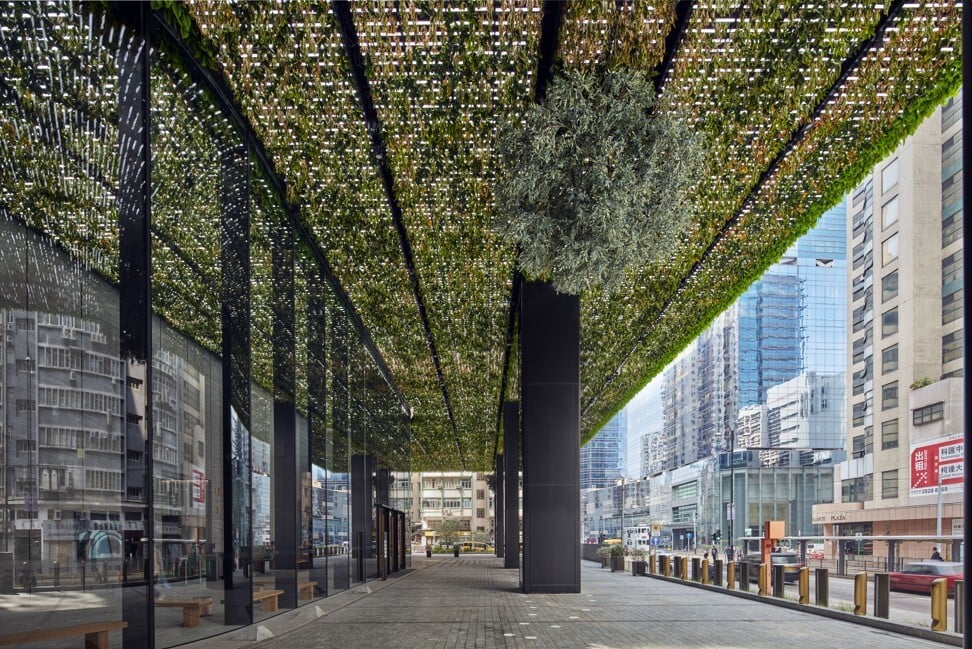
The innovative 28-storey building, designed by Hong Kong-based P&T Group, is the second K11 Atelier to be commissioned by New World Development executive vice-chairman Adrian Cheng Chi-kong. It offers tenants an array of workplace enhancers, including a rooftop garden with a 170m running track (Eskyiu came up with the initial concept for the roof area), community-building workshops and a serious commitment to sustainable practices.
“Office spaces occupy a huge percentage of a city’s space, but on the weekend they are grossly underutilised,” Schuldenfrei says. “So the concept here was: how can we make better use of all that square footage? The core of our vision was that the weekend space would belong to the community.”
The couple took inspiration from a project at Hong Kong film production company Shaw Studios to install and dismantle movie sets in minutes rather than hours. Their work at K11 Atelier features a deeply flexible set of spaces designed to cater to a variety of events in the building.
“We have just completed the user manual and it’s a hundred pages long,” Yiu says. “There’s a tonne of hidden infrastructure in the ceiling and embedded in the walls [in the lobby and other public spaces in the building] so that even the largest artwork can be put up in a few minutes. The freight elevator pops out of a stone wall [in the lobby] and doubles as a moving gallery. The floors are made of a material that can easily be drilled into and repaired afterwards. And the lighting is adjustable from the ground [via controls at floor level that determine direction and light quality].”
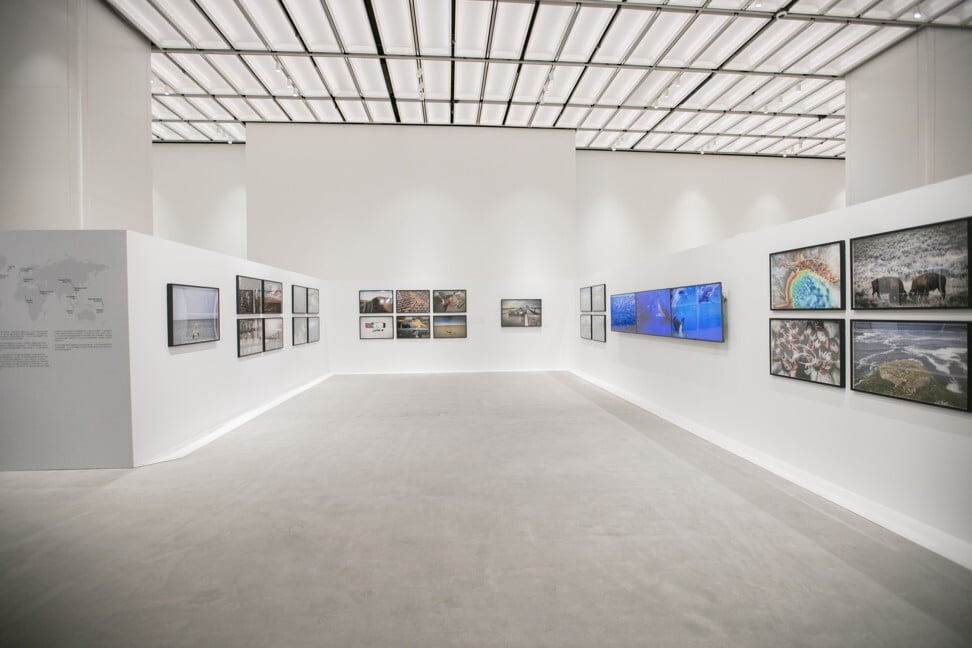
Office lobbies are usually quite static spaces, Schuldenfrei adds. “But this one is going to be very dynamic because transforming the space just for a weekend is completely viable.”
That could see gala dinners, talks, and art auctions or exhibitions held in the space, among other events both corporate and public.
Though proud of the building’s world-class sustainability measures, which include solar panels, a wind turbine, low water usage, rainwater harvesting and a greywater recycling system, Schuldenfrei is quick to point out that the goalposts are always moving.
“Amazing as this building is, I think these things can be pushed much further. I listened to a Princeton lecturer give a talk recently on improving a building’s cooling technology. If you have a 3,000-square-foot [280-square-metre] office but just one person working there at night, can you develop a system that can locate the person to cool rather than the whole space? That’s the kind of thing technology can help us with, but you have to ask the right questions first.”
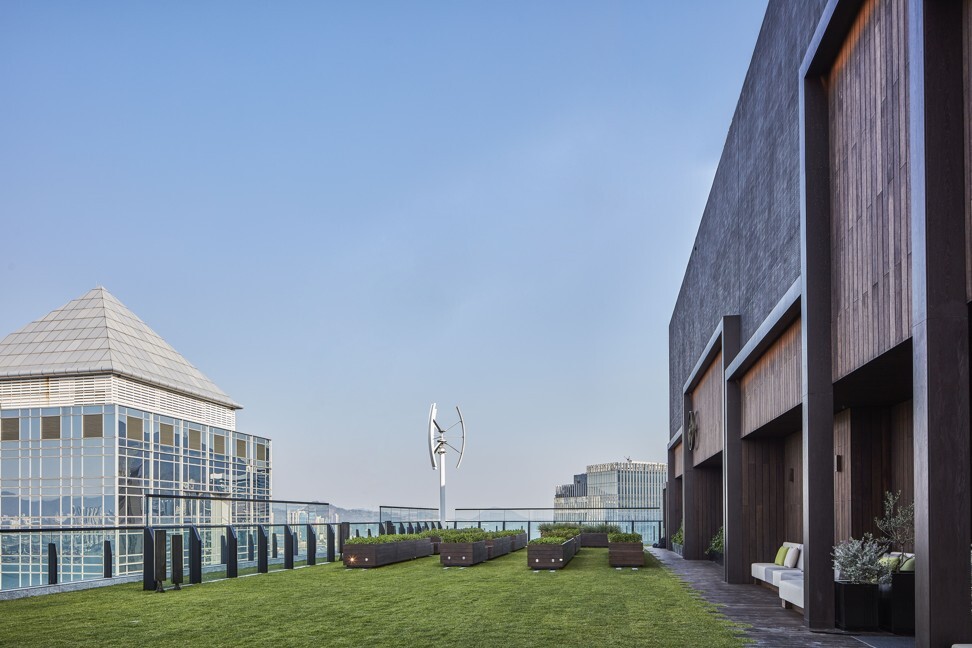
Yiu’s sense of community spirit has been developing since her sporty childhood days in Hong Kong, where she played on the city’s tennis team as a teenager. Her liberal arts degree from Columbia University in the US and a master’s degree in architecture from Princeton complement those of Schuldenfrei, who picked up degrees in architecture from Cornell and a master’s from Britain’s Cambridge University.
In 2007, two years after setting up Eskyiu in New York, the pair moved to Hong Kong.
“I was always interested in people, culture, well-being and public spaces,” Yiu says. “My work with Design Trust is a real passion that goes all the way back to that. It’s such an honour now to be involved in heritage conservation and big community projects. We’re building mini-parks around the city, we’re working closely with grass roots organisations, the government and all these different agencies and young designers. It’s all part of our platform for innovation and challenging systems that need to be rethought.”
Hong Kong architecture is not as future-looking as it is in New York or London. But I think that’s beginning to change - Eric Schuldenfrei
Rethinking and repurposing are constant components of Eskyiu’s approach to design. The concept for K11 Atelier’s wraparound greening came from a playful drawing depicting the earth’s rotation. The building’s wall and ceiling ferns are kept moist, rather than watered, by an aeroponic system now patented by New World that draws on harvested and recycled water. The dream of upside-down fruiting apple trees, however, proved impossible.
“I know they are not alive, but I’m not sure they are artificial,” says Schuldenfrei of the forecourt’s hanging olive trees, which were crafted in Japan using preserved tree trunks.
“It’s a good question because they were alive once,” Yiu says. “We’ve always been interested in what nature has manufactured and what constitutes artificiality.”
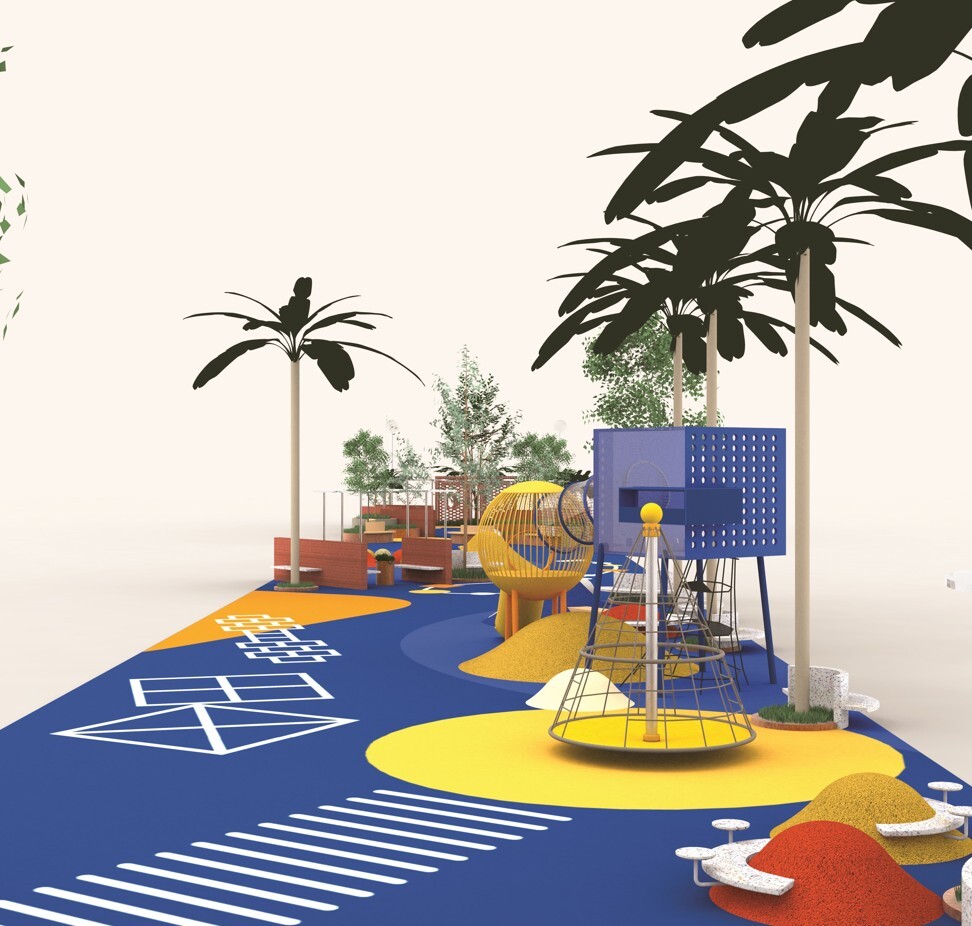
Both see questioning the function and boundaries of architecture as fundamental to their own practice, particularly when the industry has had to adapt to the unprecedented challenges of urbanisation and climate change.
“Teaching is a natural extension of questioning the discipline,” Schuldenfrei says. “That’s why we teach. It’s more of a US model though because there, all the top architects teach.
“A lot of the future of where architecture is heading is very evident in schools because that’s where you get those types of ideas: that our world doesn’t have to be the way it was handed to us, that we have the power to change the world and every building in it. Yes, we might work on one building, but what impact could that one building have on how all buildings are designed?”
The pair’s fascination for teaching and learning has taken on a different dimension as they parent their twin sons, who have just turned five years old.
“It’s been interesting seeing their take on our designs, especially our Playkits project, which was more obviously child-focused,” says Yiu of their 2018 sport-and-play-based exhibition. “But we were surprised to see how long they were engaged by an interactive architectural model we made for the Venice Biennale [the same year]. It’s inspiring to see that, which works both ways because you know that, growing up, it’s your role models and the things that inspire you that shape who you are.”
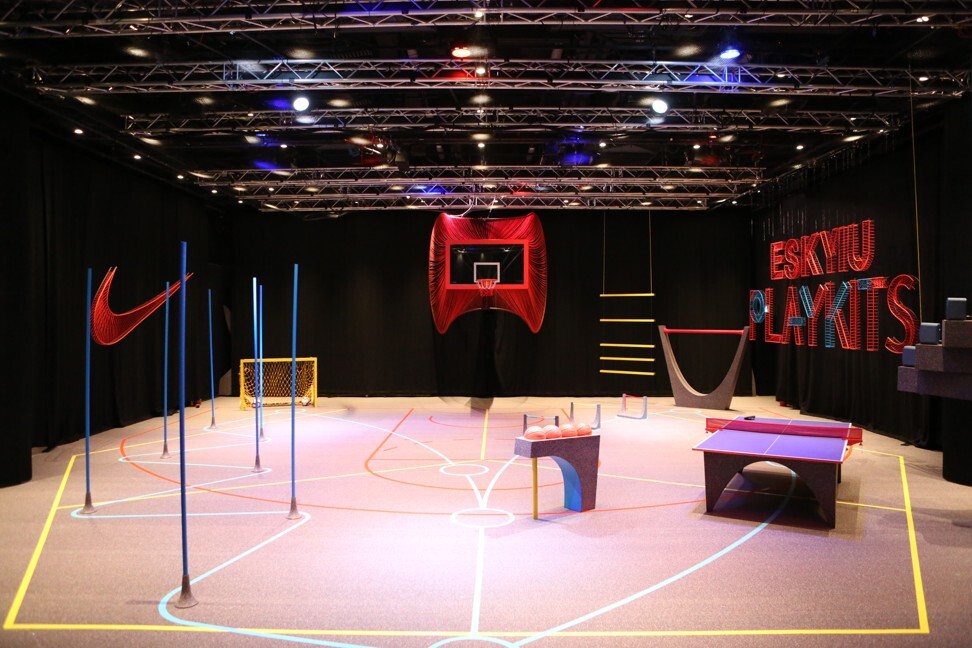
Yiu, a confessed “maximalist”, might have chosen a more explicitly creative career path such as fashion design if she hadn’t been gently persuaded to become a qualified professional.
“I am so grateful for that as it’s given me the skills to contribute fully. There’s this social-welfare concept of a ‘public intellectual’ that we’ve been exploring for a while now with different people and I think architects are well-equipped for such a role. We learn diagramming and presenting skills, and we also have this science background, understanding physics and engineering.”
On the other hand, Schuldenfrei, who was born in the US state of Rhode Island, knew as soon as he learned the word “architect” that his Lego obsession pointed to a passion in building a better world. Later, he developed an interest in the technological aspects of architecture, helping to beta test the first generation of modelling software.
“Some things are seen more clearly with younger eyes,” says Schuldenfrei, referring to his university students. “The state of the world in 50 to 80 years’ time is a very real concern for them, in a way it isn’t for the rest of us, except as parents. The risk analysis is changing too and though it’s hard to make anything for too far in the future, we need to think more in that direction.
“Hong Kong architecture is not as future-looking as it is in New York or London. But I think that’s beginning to change. For our part, we have been working on some things that we had to sign confidentiality agreements for. Exciting things are coming.”



